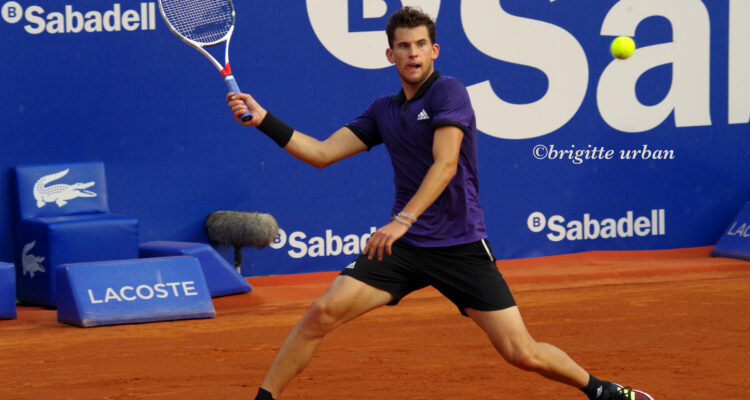MADRID, May 10, 2019 (by Sharada Rajagopalan)
Dominic Thiem is on a roll these days. It’s a cliché. Nonetheless, it is one that aptly fits the Austrian’s season so far. Back at the Barcelona Open a couple of weeks ago, Thiem won his second title of the year. When that happened, the 25-year-old was the only other player apart from Roger Federer to win multiple titles in 2019.
Federer’s and Thiem’s paths have continued to be interwoven in a couple of other ways apart from this similarity in the results’ tally. Thiem won the BNP Paribas Open in March for his first Masters 1000 title, beating Federer in the final. The Swiss went on to win the Miami Open right after, finishing with one Masters 1000 and one ATP 500 (won Dubai) to enter the clay season for the first time in three years. Thiem, meanwhile, went on to pocket the aforementioned crown in the Catalan capital (beat Daniil Medvedev) to end up with one Masters 1000 and an ATP 500 as well.
And now, at the Mutua Madrid Open on Friday, Thiem defeated Federer in the quarter-final 3-6, 7-6(11), 6-4 not only coming from a set down but also by saving two match points in the second set tie-break. Sandwiched between these two victories of his over the 20-time Slam champion, who had beaten Gael Monfils in the third round for his 1,200th career match win, Thiem, then, managed to fit in an upset over Rafael Nadal (in the Barcelona Open semi-final, 6-4, 6-4) as well.
Barcelona SF: d. Nadal
Madrid QF: d. Federer
Madrid SF: faces Djokovic 👀Can @ThiemDomi complete the Big Three set tomorrow? pic.twitter.com/bFPQoHgL13
— Tennis TV (@TennisTV) 10. Mai 2019
These triumphs of his make Thiem harder to miss – as a potential title contender at the Majors, especially at the upcoming French Open – given the other bigger names from Novak Djokovic to Rafael Nadal, and to Alexander Zverev have won either a sole title or have gone sans any. At the same time, they also connote his growth as a player in the way he has stacked up more positive results in his favour. Not just between the previous seasons to this one but also in the way he turned around his performances this year after starting off slowly with early losses in its first quarter.
Interestingly, the change in Thiem’s fortunes this year coincided with him joining forces with former Olympic champion Nicolas Massu ending a long-running association with Günther Bresnik. Thiem’s forte, undoubtedly, came to the fore while he was with Bresnik. However, despite the successes he had enjoyed under Bresnik, it still came with its set of limitations namely; the effects of a bottle-necked scheduling that invariably him adrift towards the end of the tennis calendar, and the development of a reputation of being able to play in only certain conditions.
On the other hand, the panorama of Thiem’s working relationship with Massu is yet to emerge in entirety. Regardless, the tactical nuances he has been employing in his game for the last couple of months leave hefty interpretations of their own. Thiem still remains a forceful hitter of the ball. But, time and again, he has adjusted and adapted his game to poke through his opponents’ strengths than just pry open their weaknesses.
The World No. 5 showed this in Indian Wells, in his final against Federer; in his Barcelona Open final against Medvedev (using the backhand slice as a handy weapon); and then again on Friday, against the Swiss in Madrid (anticipating Federer’s inclination to come to the net, and going behind him for winners). And in each of these matches, Thiem trailed the man whom he beat – each with a different style of play – before reversing the momentum of the match towards his side.
Beyond mere predicative indications, perhaps it is this trait that heightens the scope of Thiem’s dangerousness as a contender to collect trophies. That after a few years of assignation of labels, Dominic Thiem has gained enough self-belief to know no matter how hard it gets, he will be the last man standing on the other side of the contest, worn out and yet, unscathed.






